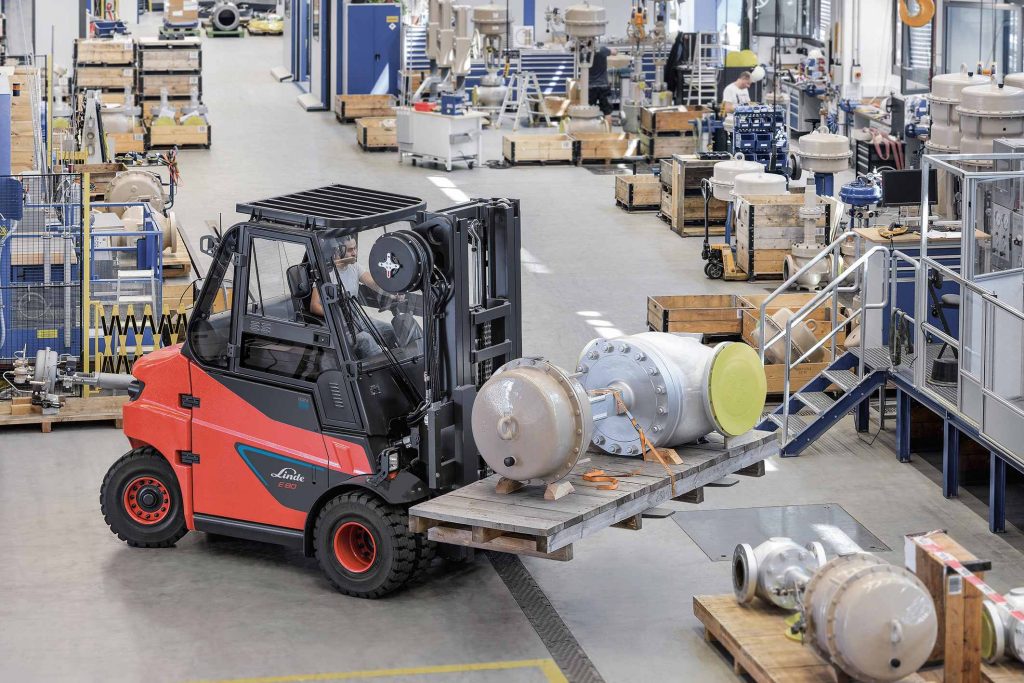OEM “Fills Last Gap in Range” With 6-8t Lithium Model Now Available
8th August 2018

The last gap has been filled, according to Linde. That’s because the largest Linde brand electric forklift trucks in the load capacity range from six to eight tons are now also available with lithium-ion batteries. They say it gives customers a choice of lead-acid and lithium-ion batteries for all electric counterbalanced trucks and almost the entire range of warehouse equipment.
It all started with pallet trucks four years ago, and since 2017, the optional equipment variant of a lithium-ion battery has been available for almost all electrically powered Linde series with a load capacity of up to five tons. Now Linde Material Handling has added further models to fill the last gaps in its product range, including electric counterbalance trucks that can lift loads of up to eight tons. “Only very few manufacturers offer electric forklifts in this load category,” emphasizes Björn Walter, Product Manager Counterbalanced Trucks at Linde Material Handling. “We are therefore proud to provide a complete solution consisting of a lithium-ion battery plus a charger for these heavy-duty vehicles too. This is where the benefits of lithium-ion technology, such as longer availability and doing away with the need to change batteries, as well as positive effects like higher driving speeds and favorable temperature behavior, are particularly evident.”
All models in this series can be equipped with a powerful 90-volt lithium-ion battery with almost 120 kWh capacity. Chargers with 9 kW, 17 kW and 30 kW are available – depending on how quickly the (intermediate) charging of the battery has to take place during operation. Thanks to the lithium-ion battery, the maintenance-free three-phase drive motors accelerate the truck to 20 km/h travel speed with or without load – a significant advantage compared to the corresponding lead-acid models. This goes hand in hand with a corresponding performance gain.
Added to this is the great robustness of heavy-duty trucks with lithium-ion battery – not least with regard to prevailing ambient temperatures. The 90-volt units operate both in frosty conditions and in industrial environments with high thermal stress. In contrast to their lead-acid counterparts, lithium-ion batteries do not heat up. This means that the otherwise required breaks for cooling the battery, which sometimes last for hours, are no more.

